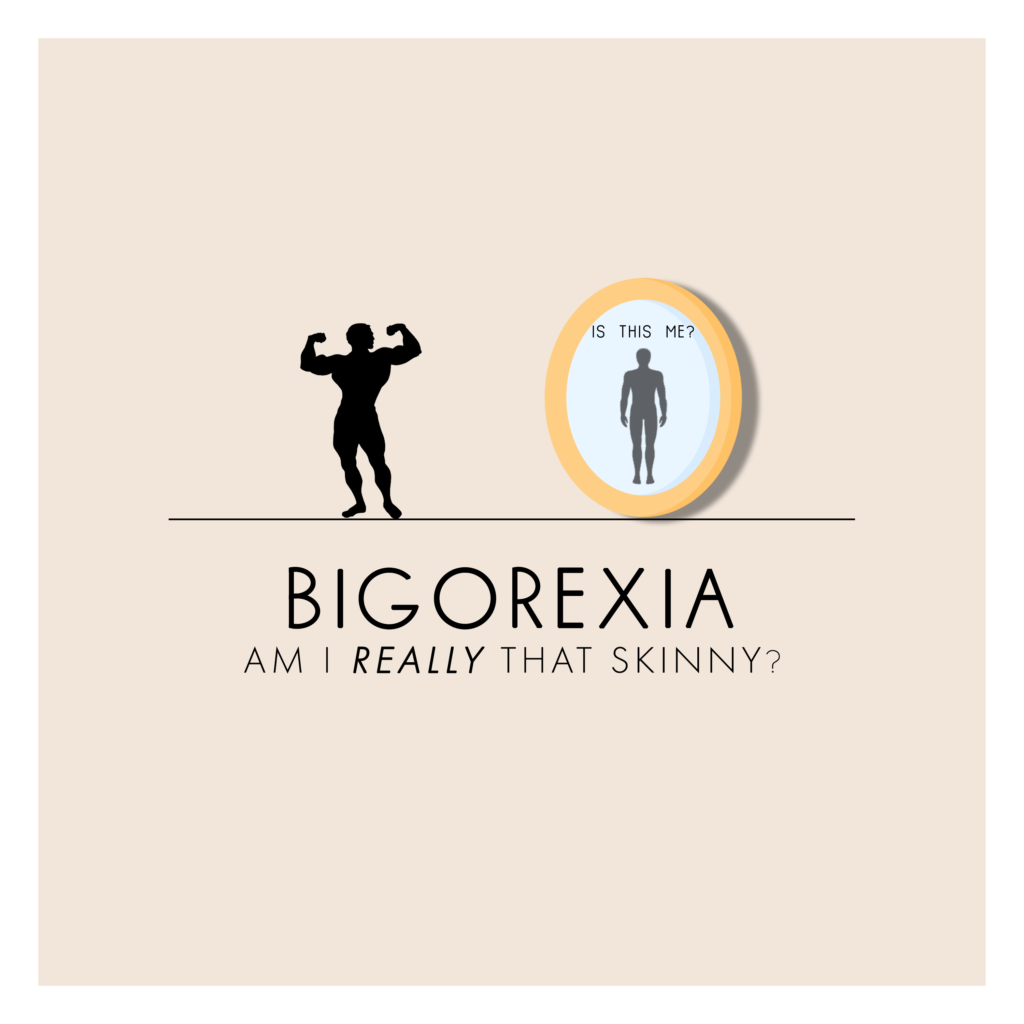
TAN “CAIFAN” WEI YING
Wei Ying is a mixed vegetables rice connoisseur who can solve a Rubik’s cube while squatting his max. He is also an associate Psychologist who did his thesis on music in powerlifting at NUS. His keen interest in muscle dysmorphia (bigorexia) and sports psychology inspires him to bring more awareness on sports psychology and mental health into the realm of resistance training. With 7 years of experience in powerlifting, Wei Ying has contributed greatly to the community as the current President of Powerlifting NUS, the Vice-President of TheGymNation, an IPF referee. He also organized the first-ever Test of Strength (2018).
Muscle dysmorphia (bigorexia)
“Hey bro, do you think my calves are small?” Has a gym buddy ever asked you this question? If so, you might think they’re suffering from Muscle Dysmorphia (MD), or Bigorexia, which is more catchy, but chances are, they’re more likely to just be narcissistic or have really small calves. Be honest and let them down gently… However, if you’ve noticed significant distress from them over their appearance, read on to find out more!
At a glance, the distinction between an individual suffering from MD and a typical ‘gym bro’ might not be clear, the behaviours and cognitions experienced are typically more intense. The population typically experiences greater body dissatisfaction, more dysfunctional eating attitudes, higher prevalence of substance abuse, mood, anxiety, and eating disorders (Olivardia et al., 2000).
MD is a specification under Body Dysmorphic Disorder (BDD), an obsessive-compulsive type disorder. For a diagnosis of BDD, the Diagnosis and Statistical Manual of Mental Disorders Fifth Edition’s (DSM-V; American Psychiatric Association, 2013) criteria includes a preoccupation with perceived defects or flaws in their physical appearance, where one perceives flaws in body parts. This might often be unobservable to most but glaring to the individual. There is also the presence of repetitive behaviours being performed, such as mirror checking, comparing appearances with others, and reassurance seeking. As a result of their preoccupations, the individual might experience clinically significant distress or impairments to their social life, occupation, and functioning. It is also important that this distress or appearance preoccupation is not better explained by disorders that share similar symptoms with MD, such as eating disorders.
Individuals suffering from MD might perceive a lack of muscularity or leanness, when in reality they might not look particularly scrawny or have high amounts of body fat, as these preoccupations are usually slight or not observable by others. Repetitive behaviours specific to MD could include constant mirror checking (perhaps flexing whenever they walk past a reflective surface), measuring their biceps, or tugging at certain body parts. Although these acts may be perceived as narcissism, they are usually not pleasurable and might even increase anxiety or dysphoria experienced by the individual.
Impact
The impact of MD affects an individual’s life in multiple aspects. Individuals might sustain physical injuries when training while fatigued or even injured. Disordered eating is often present due to their overvalued belief systems and cognitive distortions (e.g., I must eat certain foods, or I’ll become fat, or I must eat as much as I can if I want to grow). They also might consume illegal supplements or substances, such as anabolic steroids, in a bid to become stronger and more muscular to fit their ideals, despite the negative consequences of steroid use.
MD also affects an individual’s social life, as they might turn down invitations for social gatherings to train. Environments that result in an individual’s body being exposed, such as beaches, are also avoided due to the high levels of anxiety experienced in those situations (Olivardia, 2001).
As mentioned earlier, mirror-checking occurs in the MD population more often than other populations (Olivardia et al., 2000), which can affect their ability to sustain employment. Furthermore, the constant comparison of physiques with others often results in a downward spiral in terms of body distortion and anxiety (Olivardia, 2001). Increased suicide attempts and poorer quality of life are also associated with an MD diagnosis (Pope et al., 2005).
Prevalence
The prevalence of MD is extremely high among resistance training enthusiasts (Pope & Katz, 1994), as well as other populations, such as college students (Goodale et al., 2001). Prevalence is also disproportionately higher in males, perhaps due to societal norms and internalized ideals of male muscularity.
MD is also highly comorbid with anxiety, depression, and eating disorders.
risk factors
While MD is highly prevalent in the resistance training community, the risk is dependent on the goals of the activity. Prevalence is higher for athletes who engage in sports that focus on aesthetics (e.g., Bodybuilding), compared to sports that focus on strength (e.g., Weightlifting, Powerlifting; Skemp et al., 2013). Development and maintenance of MD are also affected by dysfunctional eating patterns, self-esteem, and social anxiety.
treatment
Evidence of treatment options specific to MD have been scarce, but a combination of psychotherapy and medication is often used to treat BDD. Cognitive behavioural therapy (CBT) can be used to challenge some of the maladaptive thoughts that the individual has regarding their body and introducing other coping behaviours to reduce occurrence of mirror-checking and reassurance seeking. Antidepressants such as Selective Serotonin Reuptake Inhibitor (SSRI) that are used to treat depression can be taken together with CBT to treat BDD.
conclusion
While most of us have a body part that we dislike (hint: baby cows), the presence of MD might be unlikely. However, MD is a real and very prevalent disorder that is often under-reported due to the lack of awareness surrounding the topic. If you or someone you know experience any of the symptoms listed above, please reach out to a mental health professional.
references
American Psychiatric Association. (2013). Diagnostic and statistical manual of mental disorders (5th ed.). Arlington, VA: Author.
Olivardia, R. (2001). Mirror, mirror on the wall, who’s the largest of them all? The features and phenomenology of muscle dysmorphia. Harvard Rev. Psychiatry. 9, 254–259, https://doi.org/10.1080/10673220127900
Olivardia, R., Pope, H. G. & Hudson, J. I. (2000). Muscle dysmorphia in male weightlifters: a case-control study. Am. J. Psychiat. 157, 1291–1296, https://doi.org/10.1176/appi.ajp.157.8.1291
Pope, C. G., Pope, H. G., Menard, W., Fay, C., Olivardia, R., & Phillips, K. A. (2005). Clinical features of muscle dysmorphia among males with body dysmorphic disorder. Body image, 2(4), 395–400. https://doi.org/10.1016/j.bodyim.2005.09.001
Skemp, K. M., Mikat, R.P., Schenck, K. P., & Kramer, N. A. (2013) Muscle Dysmorphia, Journal of Strength and Conditioning Research, 27(9), 2427-2432. doi:10.1519/JSC.0b013e3182825474

